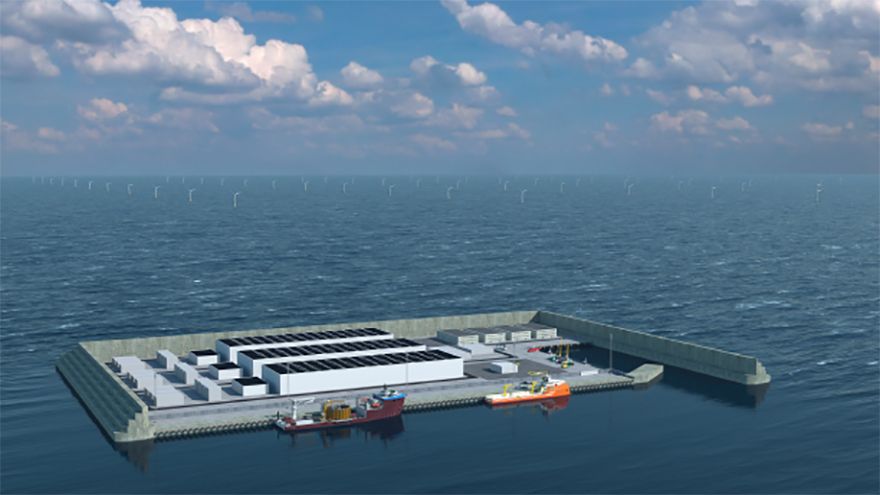Denmark plans world’s first wind energy hub on artificial island
Posted on 09 Feb 2021 and read 1308 times
 Illustration courtesy of Danish Energy Agency
Illustration courtesy of Danish Energy AgencyDenmark has reached a landmark agreement on the construction of an energy hub in the North Sea which will be an artificially constructed island 80km from the shore of the Jutland Peninsula. It will be owned by a public-private partnership and will strengthen the integration of Europe’s power grids and increase renewable electricity production necessary for a climate-neutral Europe.
Denmark has introduced a cut-off date of 2050 for oil and gas extraction in the North Sea and canceled all future licensing rounds. By agreeing on the construction and ownership of the world’s first energy hub in the North Sea, Denmark is taking a significant step in the green transition.
The energy hub will produce yet unseen amounts of green electricity and is one of the government’s flagship projects for the green transition in Europe. Fully implemented it will be able to meet the average needs of 10 million European households.
Dan Jørgensen, Danish Minister for Climate, said: ”This is truly a great moment for Denmark and for the global green transition. This decision marks the start of a new era of sustainable energy production in Denmark and the world and it links very ambitious climate goals with growth and green jobs.
“The energy hub in the North Sea will be the largest construction project in Danish history. It will make a big contribution to the realisation of the enormous potential for European offshore wind, and I am excited for our future collaboration with other European countries.”
The energy hub will serve as an offshore power plant gathering and distributing green electricity from hundreds of wind turbines surrounding the island directly to consumers in countries surrounding the North Sea. The island is expected to have a total area of at least 120,000m
and in its first phase it will be able to provide 3 million European households with green energy.
The project will be a public-private partnership between the Danish state and private companies. The state will own the majority of the island, but private companies will be crucial for the project to fulfill the potential as regards to innovation, flexibility, cost-effectiveness and business potential.
Mr Jørgensen continued: “We are taking a decisive step toward a clean energy future. The EU has set a goal to achieve climate-neutrality by 2050 and the European Commission has set a target of 300GW of offshore wind energy in order to attain this goal.
“By constructing the world’s first energy hub with a potential capacity of 10GW, Denmark will significantly contribute to this ambitious target. Not only by dramatically expanding renewable energy production, but also by supplying our European neighbours with an abundance of renewable energy.”
The artificial island will feature a harbour and facilities for storage and conversion of green electricity from the nearby offshore wind turbines. The long-term ambition is to be able to store green electricity on the island, convert it to liquid green fuel, and send it via subsea cables to Denmark and neighbouring countries.